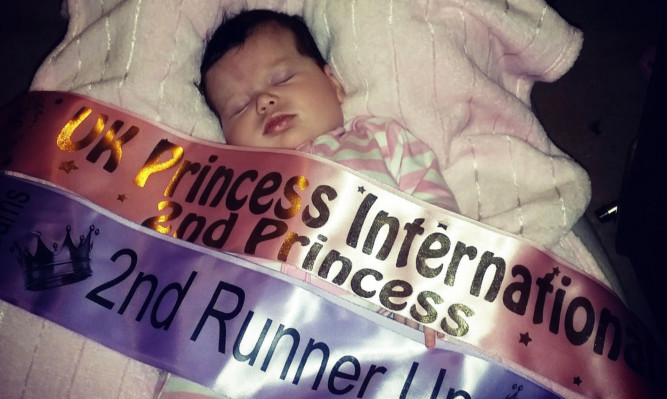
With the news that baby Luna Collins has become Britain’s youngest beauty pageant entrant at three months, we ask if such events should allow the very young to take part.
Three-month-old baby becomes Britain’s youngest beauty pageant entrant.
YES
They offer young people the building bricks for a confident future and help them perform better at school. The mums who enter our competitions are hugely sensible and always present their infants in tasteful clothes.
We do not run the type of show you see in the US where children wear provocative outfits. Photographs are vetted and not published without the approval of parents.
There is no harm in make-up or glam clothes as they’re fun for everyone, especially the children. Our competitions are not sexualised in the way some dance ones are where you see little girls in tight body suits.
I entered beauty competitions when I was 15 and people told me I was too young. All I can say is that it did me no harm and in fact, gave me the confidence to open this business.
It is run along ethical lines.
Soraia Mateus, who runs UK Princess & Prince International Beauty Pageants
NO
Children this age are far too young to make any decision about whether they want to take part in competitions which focus mainly on their appearance.
Under-5s are especially unable to make any informed choice. We have to ask whether parents are driven by their own ambitions. They may say that it is all fun and these are a great opportunities to meet parents from all over country.
However, we cannot get away from the fact that these contests judged mainly on a child’s appearance. Are they being given the impression that looks are the most important aspect of life and they are not good enough?
For older children the pressure is on them to wear make-up and adult style clothes.
We have a duty to ensure a child’s life is as healthy as possible and I appeal to these parents to think twice.
Claude Knights, CEO of Kidsscape children’s charity

Enjoy the convenience of having The Sunday Post delivered as a digital ePaper straight to your smartphone, tablet or computer.
Subscribe for only £5.49 a month and enjoy all the benefits of the printed paper as a digital replica.
Subscribe